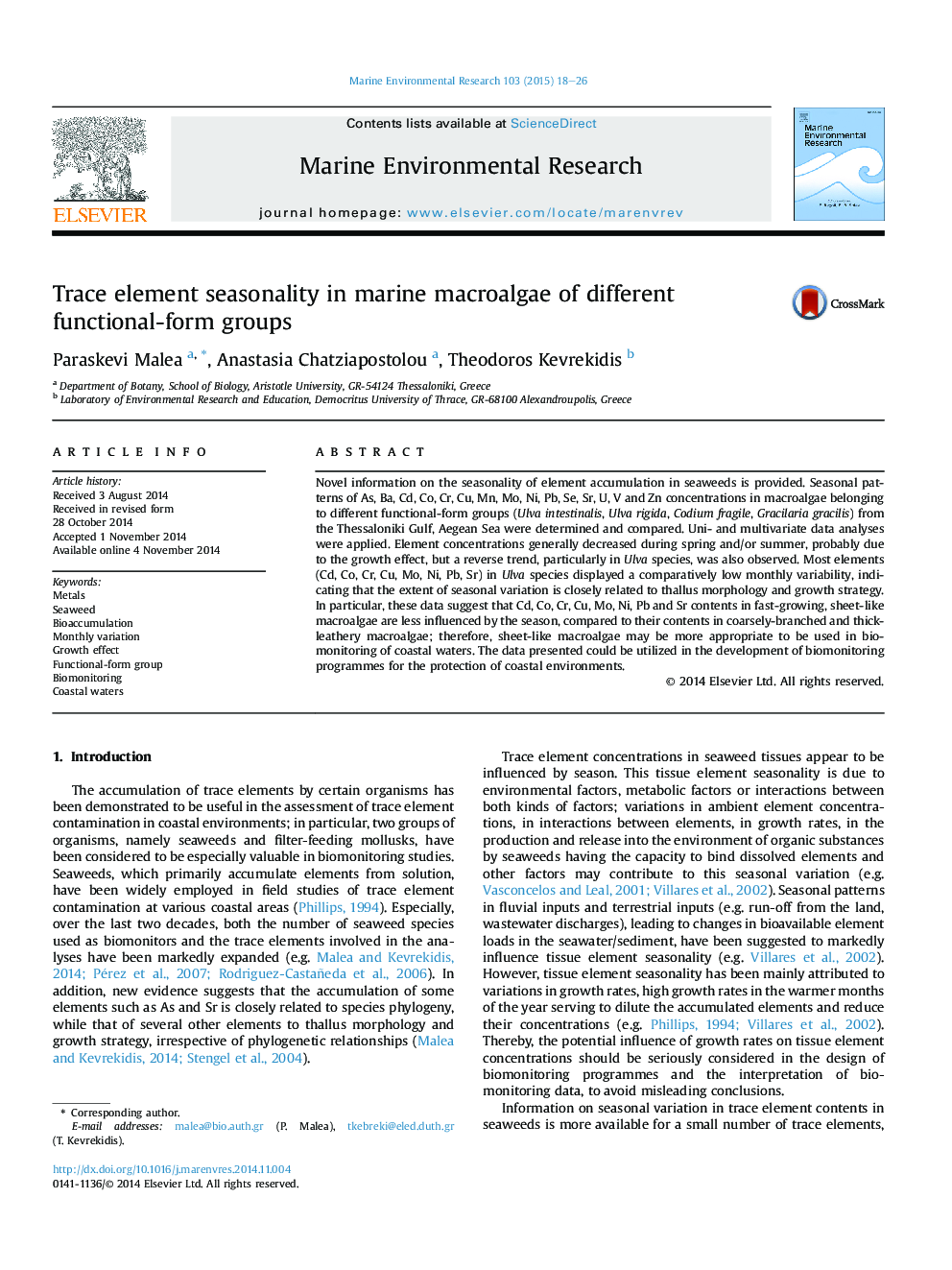| کد مقاله | کد نشریه | سال انتشار | مقاله انگلیسی | نسخه تمام متن |
|---|---|---|---|---|
| 4550721 | 1627579 | 2015 | 9 صفحه PDF | دانلود رایگان |
• Trace element contents in seaweeds generally display a clear seasonal pattern.
• Element contents decrease in spring–summer with increasing temperature and irradiance.
• Several elements in sheet-like macroalgae display a reverse seasonal pattern.
• The extent of variation is closely related to thallus morphology and growth strategy.
• The use of sheet-like macroalgae as biomonitors is less influenced by season.
Novel information on the seasonality of element accumulation in seaweeds is provided. Seasonal patterns of As, Ba, Cd, Co, Cr, Cu, Mn, Mo, Ni, Pb, Se, Sr, U, V and Zn concentrations in macroalgae belonging to different functional-form groups (Ulva intestinalis, Ulva rigida, Codium fragile, Gracilaria gracilis) from the Thessaloniki Gulf, Aegean Sea were determined and compared. Uni- and multivariate data analyses were applied. Element concentrations generally decreased during spring and/or summer, probably due to the growth effect, but a reverse trend, particularly in Ulva species, was also observed. Most elements (Cd, Co, Cr, Cu, Mo, Ni, Pb, Sr) in Ulva species displayed a comparatively low monthly variability, indicating that the extent of seasonal variation is closely related to thallus morphology and growth strategy. In particular, these data suggest that Cd, Co, Cr, Cu, Mo, Ni, Pb and Sr contents in fast-growing, sheet-like macroalgae are less influenced by the season, compared to their contents in coarsely-branched and thick-leathery macroalgae; therefore, sheet-like macroalgae may be more appropriate to be used in biomonitoring of coastal waters. The data presented could be utilized in the development of biomonitoring programmes for the protection of coastal environments.
Journal: Marine Environmental Research - Volume 103, February 2015, Pages 18–26
